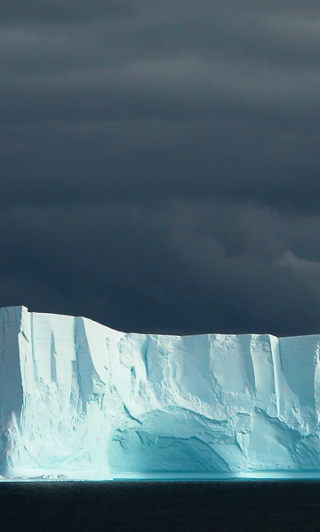Winds hint at bigger rise
 Change is on the wind, and scientists say it could have impacts beyond previous predictions.
Change is on the wind, and scientists say it could have impacts beyond previous predictions.
A new study says changes in the winds circling Antarctica may accelerate global sea level rise significantly more than earlier estimates.
Changes to Antarctic winds have already been linked to southern Australia’s drying climate, but now it appears they may also have a profound impact by warming ocean temperatures under the Antarctic ice shelves.
“When we included projected Antarctic wind shifts in a detailed global ocean model, we found water up to 4°C warmer than current temperatures rose up to meet the base of the Antarctic ice shelves,” said lead author UNSW's Dr Paul Spence from the ARC Centre of Excellence for Climate System Science (ARCCSS).
“The sub-surface warming revealed in this research is on average twice as large as previously estimated with almost all of coastal Antarctica affected.
“This relatively warm water provides a huge reservoir of melt potential right near the grounding lines of ice shelves around Antarctica.
“It could lead to a massive increase in the rate of ice sheet melt, with direct consequences for global sea level rise.
Previous global models did not adequately capture currents and the structure of water temperatures at low depths.
The ANU team used the university’s supercomputers for a more detailed approach, modelling down to a depth of 700m below the coastline.
The new view suggests changes in Antarctic coastal winds due to climate change and their impact on coastal currents could be even more important on melting of the ice shelves than the broader warming of the ocean.
“When we first saw the results it was quite a shock. It was one of the few cases where I hoped the science was wrong,” said Dr Spence, who is a lecturer in UNSW's Climate Change Research Centre.
“But the processes at play are quite simple, and well-resolved by the ocean model, so this has important implications for climate and sea-level projections. What is particularly concerning is how easy it is for climate change to increase the water temperatures beside Antarctic ice sheets.”
The research may help to explain a number of sudden and unexplained increases in global sea levels that occurred in the geological past.
“It is very plausible that the mechanism revealed by this research will push parts of the West Antarctic Ice Sheet beyond a point of no return,” said Dr Axel Timmerman, Prof of Oceanography at University of Hawaii and an IPCC lead author who has seen the paper.
“Dramatic rises in sea level are almost inevitable if we continue to emit greenhouse gases at the current rate,” said another of the paper’s authors, Dr Nicolas Jourdain from ARCCSS.
“Our research indicates that as global warming continues, parts of East Antarctica will also be affected by these wind-induced changes in ocean currents and temperatures.”
The paper has been published in Geophysical Research Letters.








 Print
Print